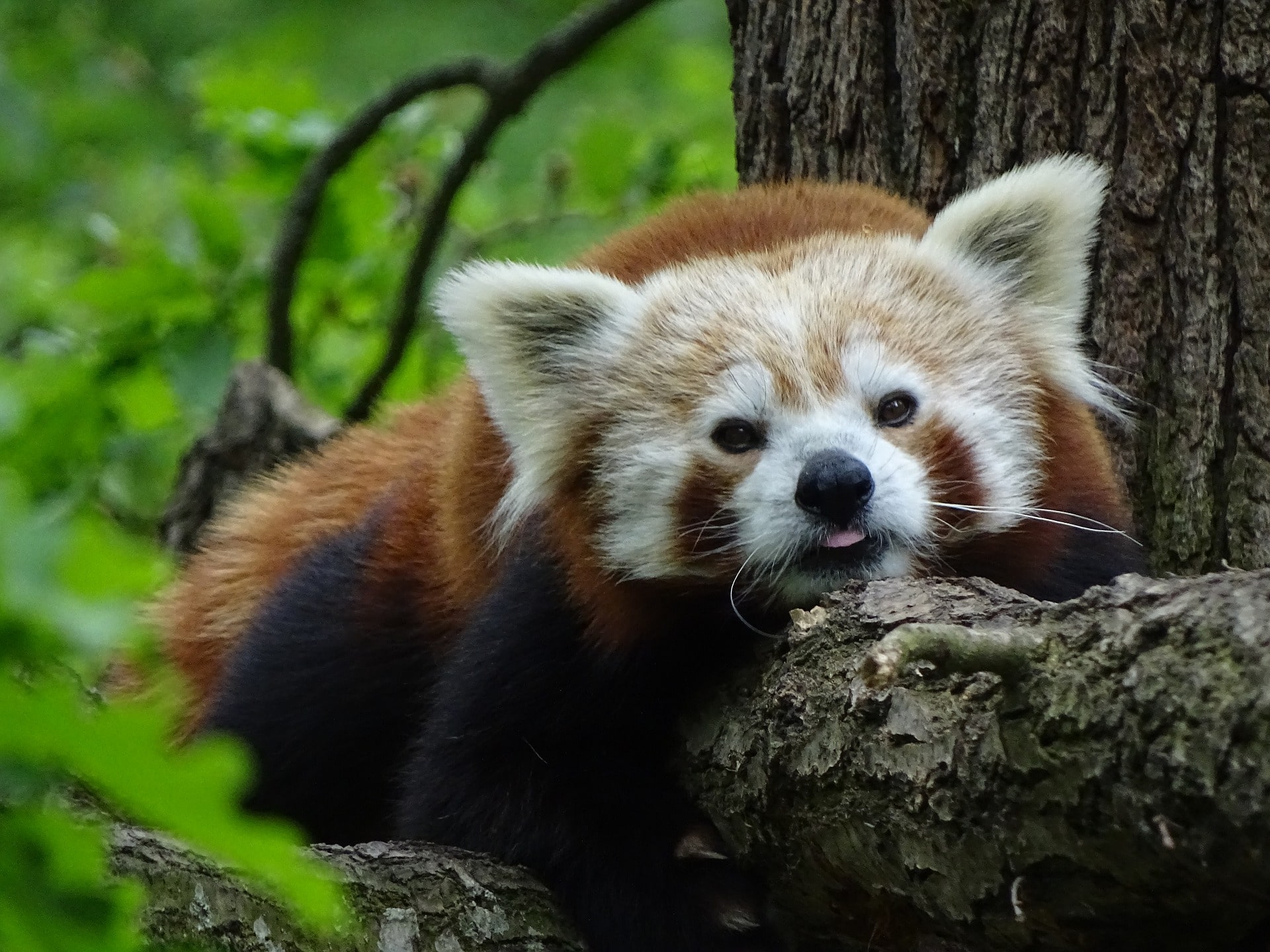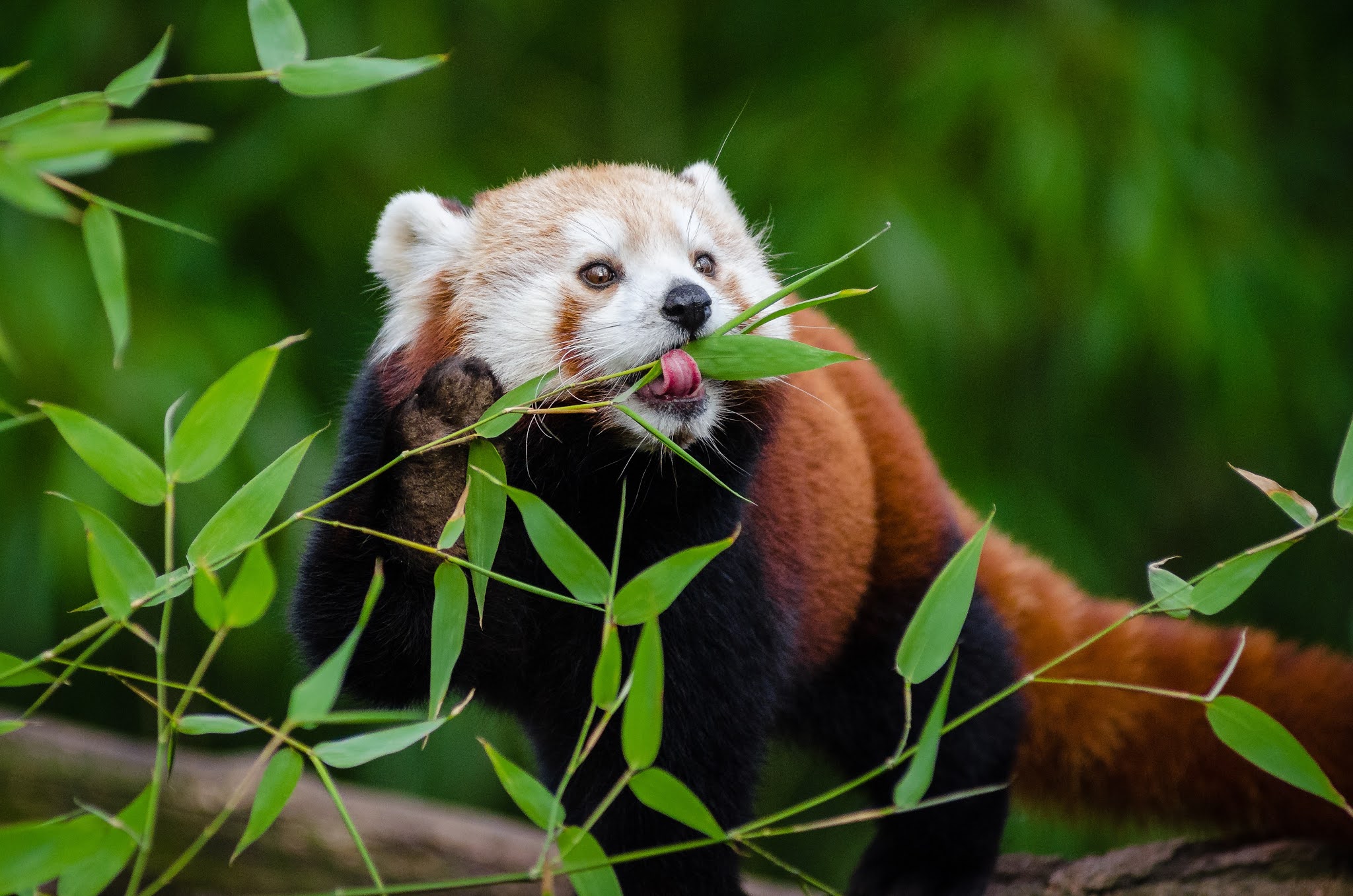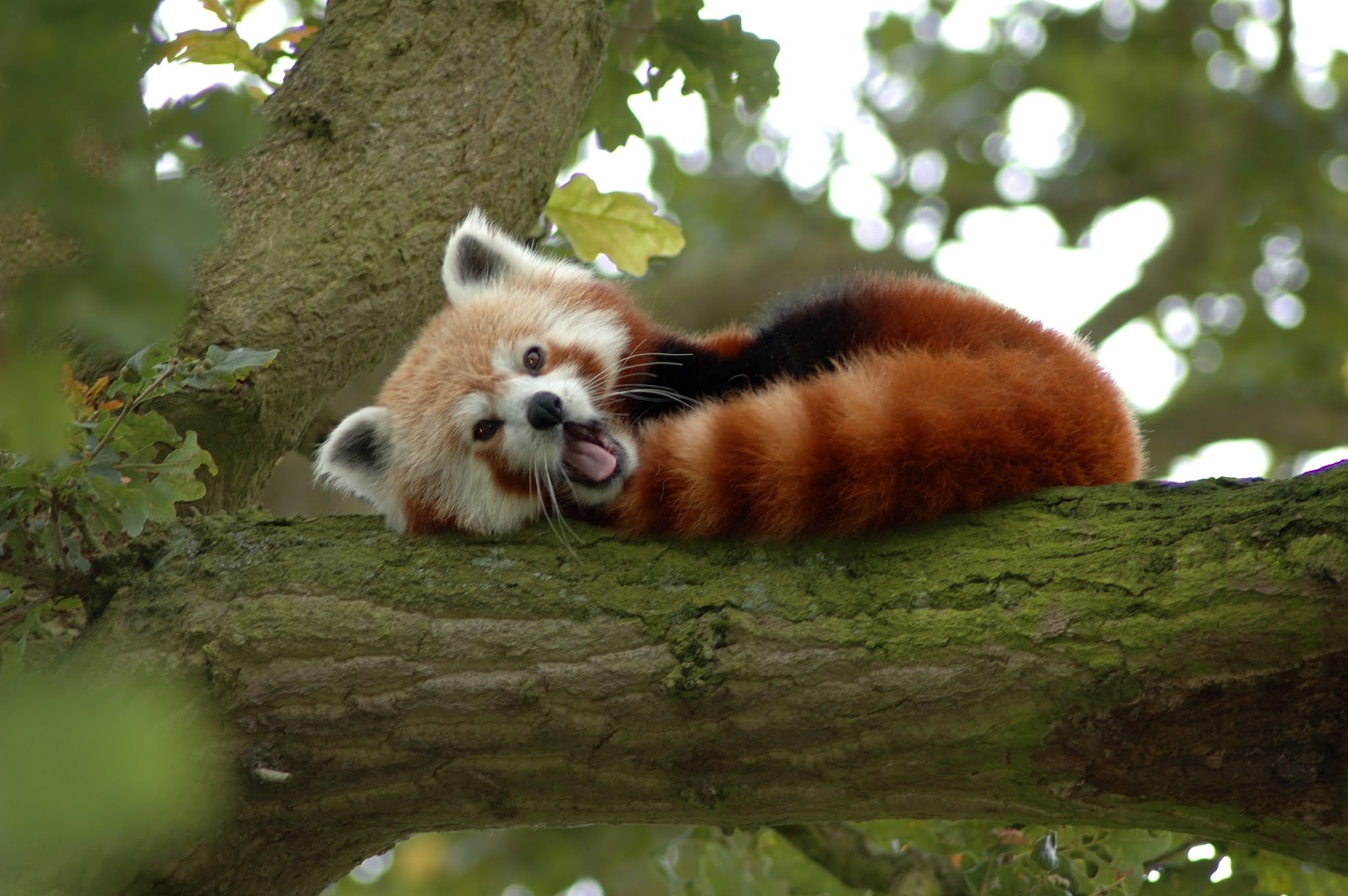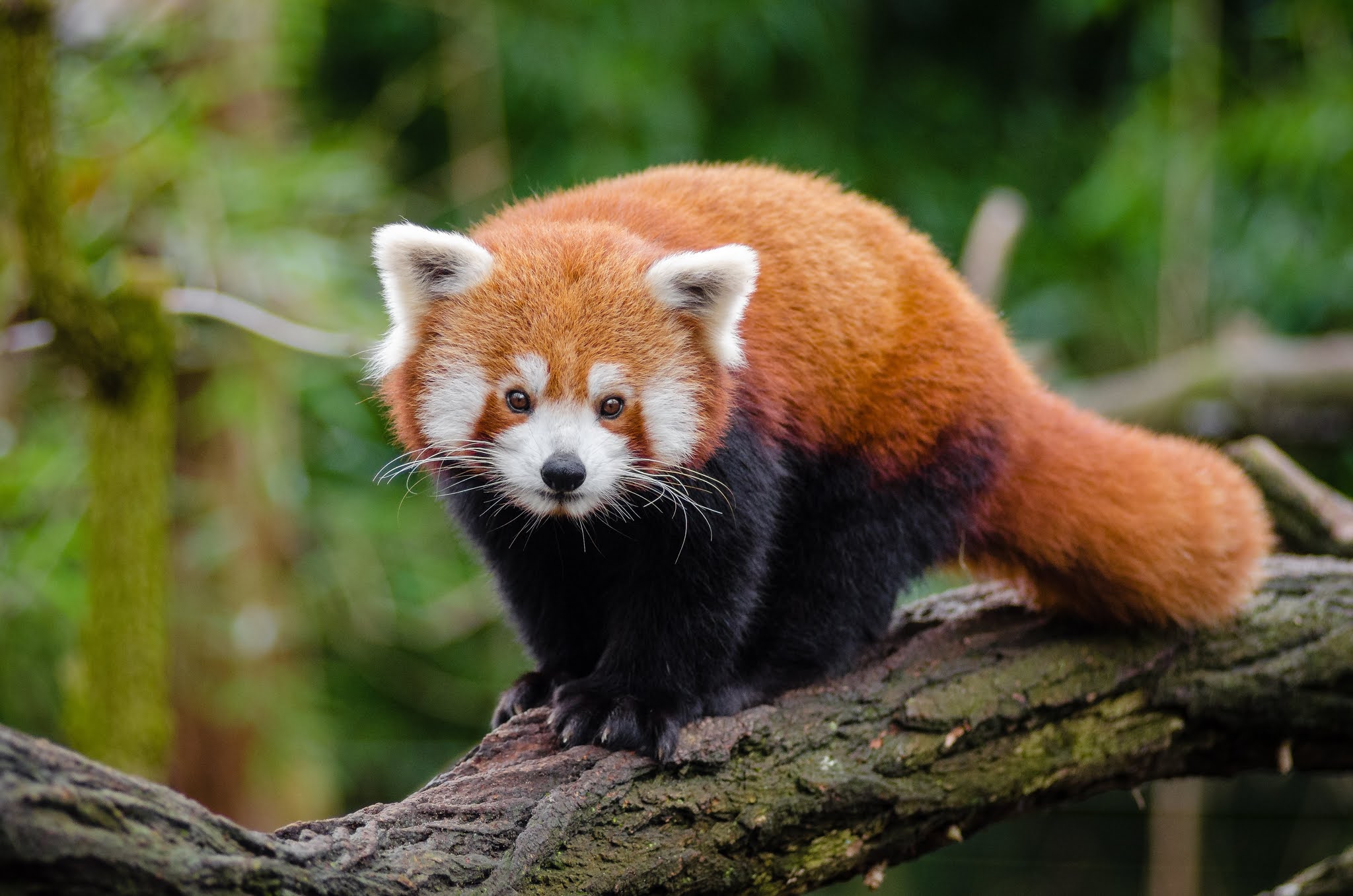 |
| About the Red Panda, the Bamboo Chewing Panda from the Himalayas |
About the Red Panda, the Bamboo Chewing Panda from the Himalayas. Hearing the name panda, visitors to the zoo might imagine a bear-like animal that came from China and its fur is black and white.
However, this does not apply to the red panda or the scientific language Ailurus fulgens. The reason is, the red panda doesn't look like a bear, but more like a raccoon or a weasel.
Then if the panda has black and white fur, then the red panda - as the name implies - has a body that is predominantly red in color. The name panda was given to the red panda because the panda and red panda like to eat bamboo.
About the Red Panda, the Bamboo Chewing Panda from the Himalayas
The red panda also has a white face with black motifs on the eyes. In addition, the red panda can be identified by looking at its elongated body, black legs, thick tail, and a dark ring-like pattern on its tail.
Unlike the panda whose habitat is only limited to China's bamboo forests, the red panda has a wider habitat range because it can also be found in countries other than China.
 |
| About the Red Panda, the Bamboo Chewing Panda from the Himalayas |
The red panda's main habitat is the forested areas of the Himalayas, which include northern India, Nepal, Bhutan, Myanmar, Laos and southern China. These animals can be found at an altitude between 2,200 to 4,800 meters above sea level.
The red panda is a solitary animal and is active during the day or night. Thanks to its long tail, the red panda can climb cliffs and trees very freely.
When not eating, red pandas spend their time resting in the trees. When it comes to cleaning itself, the red panda will lick its own limbs or rub against hard objects.
In their wild habitat, the snow leopard is the main predator of the red panda. To be safe from enemy attacks, the red panda takes advantage of its agile movements and ability to climb high trees.
If caught, the red panda can still fight back by clawing. When the enemy is shocked after being attacked by the red panda, the red panda then takes advantage of the moment to rush to escape to safety.
Red panda feeding and reproduction behavior
In the previous paragraph I mentioned that the red panda is a bamboo eating animal. As much as 95 percent of the food consumed by the red panda consists of bamboo, especially its leaves.
When eating bamboo, the red panda can use its front legs like hands to hold bamboo shoots. Apart from bamboo, the red panda also wants to eat bird eggs, insects, grass, leaves, flowers and berries.
 |
| About the Red Panda, the Bamboo Chewing Panda from the Himalayas |
The breeding season for
red pandas occurs in early winter local time. The goal is for the female to give birth to her cubs just in time for the arrival of spring or summer.
When the mating season arrives, the red panda becomes more frequent in interacting with other red panda individuals. Both male and female red pandas can mate with several opposite sexes at once.
After mating, the female will then enter a gestation period of 134 days, about 4.5 months. The average number of babies conceived by women is about two.
When the female feels that her baby is about to be born, the female will look for a place such as a tree hole or rock hollow to serve as a place to give birth.
From a few days before giving birth, the female will collect pieces of wood and leaves to make a nest in the place she has chosen.
Red Panda Videos
Baby red pandas are born in the local spring or summer time. June is when the baby red panda has a high birth rate.
At first the mother red panda spent almost all of her time beside her baby cleaning and caring for the cubs. However, about one week after the baby is born, the mother red panda will spend more time outside the nest and return to the nest every few hours.
Red panda cubs will leave their mothers to live independently at three months of age. Then entering the age of 1.5 years, the red panda will experience sexual maturity.
A red panda has a maximum age of 14 years. The red panda has a maximum length of 62 cm including a tail that reaches a maximum length of 47 cm and a maximum weight of 6.2 kilograms.
Between Red Panda and Human
Thanks to their cute appearance and easily distinguished from other animals, humans have long had a special affinity for the red panda.
Internet browser developer Mozilla admits the reason they chose the name Firefox because it was inspired by the red panda. The reason is, the red panda is also known as the fire fox.
In India, the state of Sikkim defines the red panda as a unique animal of its country. The international tea community in Darjeeling, India, has also chosen the red panda as its organization's mascot.
In the realm of entertainment, the red panda has also appeared in the animated series Avatar The Legend of Korra. In the animated series, the character Bolin is told to raise a red panda named Pabu.
Human admiration for the red panda on the other hand is also the reason why this animal is much sought after and killed. The red panda is widely hunted by local people for its skin and tail.
The red panda skin can be processed into hats and traditional wedding attire, while the tail feathers can be used as a feather duster.
Apart from being killed, red pandas are also often caught alive so that they can be sold to zoos and exotic animal collectors.
Another threat to the red panda is habitat destruction by humans. Due to the increasing amount of forest and loss of bamboo, the population of red pandas in the wild is decreasing.
 |
| About the Red Panda, the Bamboo Chewing Panda from the Himalayas |
They are even now categorized as endangered animals. So that these animals do not become extinct, the Chinese government and neighboring countries have designated a number of habitat for the red panda as protected forest.
However, efforts to conserve red pandas are still hampered by the ongoing illegal hunting and trade of red pandas.
By: Ochie














0 comments